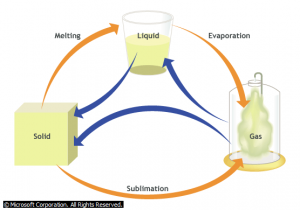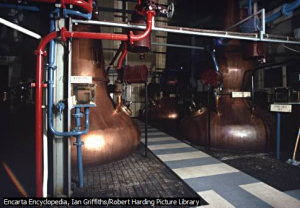Back to: CHEMISTRY SS1
Welcome to class!
In today’s class, we will be talking about standard separation techniques for mixtures. Enjoy the class!
STANDARD SEPARATION TECHNIQUES FOR MIXTURES

The importance of separating a mixture into its constituents cannot be overemphasized since most substances are needed in their pure form. There are many standard separation techniques. Some of these separating techniques are filtration, centrifugation and decantation. Others include sieving, magnetic separation and sublimation, evaporation, crystallization, fractional precipitation, distillation, fractional distillation, using separating funnel and chromatography.
FILTRATION:
Filtration is a separation technique that involves separating an insoluble solid from liquid using a filter. For example, a mixture of chalk particles in water can be separated using filtration technique. Filtration is used in industries such as water purification plants and breweries.
CENTRIFUGATION:

Centrifugation is a standard separation technique used to separate a mixture of insoluble solid from a liquid by using a centrifuge. A centrifuge is a machine which can spin test tubes containing suspensions at high speed. Centrifugation is often used when there is only a small amount of material. In hospitals, blood samples are centrifuged to separate the blood cells from the plasma.
DECANTATION:
Decantation is a separation technique used to separate a mixture containing insoluble solid from a liquid. This is done when the mixture is allowed to settle down with the upper clear liquid carefully poured or decanted into a clean container thereby leaving the lower solid in the container originally containing the mixture. This is a quick but inaccurate method of separating the components of a mixture.
EVAPORATION:
Evaporation is a separation technique used to recover soluble solute from its solvent. For example, salt can be separated from a salt solution by evaporation.

| Salt is produced in the San Francisco area mainly by solar evaporation, where seawater is fed into large ponds that are gradually evaporated by the sun and the wind. After the water is evaporated, the salt is collected. |
Evaporation is used in salt –making industries.
CRYSTALLIZATION:
Crystallization is used to obtain pure crystals of salts which decompose easily on heating from its solution. The solution is concentrated by heating. It is allowed to cool down and crystals start to form. To induce crystal formation:
- add crystals of the salt (seedling)
- scratch the inside of the container with a glass rod
Crystallization is used in industries where the purity of the product is important, such as in drug industries and sugar industries.
FRACTIONAL CRYSTALLIZATION:
It is used to separate two or more solutes (solids) which are present in the same solution. The solutes to be separated must have different solubilities at different temperatures. Starting from a particular temperature, as cooling of the solution of those solutes takes place, the crystals of the relevant solutes appear leaving the other solutes in the solution.
EVALUATION
- Explain briefly the following methods of separation of mixtures: (a) Filtration (b) Decantation (c) Centrifugation
- Explain how a pure sample of copper (II) tetraoxosulphate (VI) crystals can be obtained from its solution in the laboratory.
- How would you separate a mixture of PbCl2 and NaCl
PRECIPITATION:
In precipitation, a difference in the solubility of a solid in two different miscible liquids are used. For example, FeS04 is soluble in water but not on ethanol. If ethanol is added to a solution of FeS04 in water, the FeS04 will be precipitated out of the solution and filtered out.
SUBLIMATION:
Sublimation is the change of state from solid to gas directly on the application of heat. Examples of substances that sublime are iodine and ammonium chloride. Sublimation can be used to separate these substances. The pure crystal recovered is the sublimate.

DISTILLATION:

This is used to recover a solvent from a solution. It involves vaporizing a liquid and then condensing the vapour into a liquid called distillation. The solute and other impurities remain in the distillation flask. It is used in gin and water distilleries to manufacture gin and distilled water.
FRACTIONAL DISTILLATION:
This is used to separate a mixture of two or more miscible liquids based on their boiling points. When two liquids have boiling points that are very close (less than 100oC the use of simple distillation becomes difficult. A fractionating column is inserted into the distillation flask. It is used to separate crude oil into fractions, separation of liquid air into oxygen and nitrogen, manufacture of spirits and to separate benzene and methylbenzene mixture.
EVALUATION
- State the major difference between distillation and fractional distillation in terms of (a) Features of the apparatus (b) Mixtures to be separated
- Explain the following separation techniques
- Precipitation
- Sublimation
SEPARATING FUNNEL:
This is used to separate immiscible liquids. It depends on the densities of the two liquids. The less-dense will be on top and the denser below. It is used to separate water and kerosene
SIEVING:
This is used to separate solid particles of different sizes. Particles smaller than the size of the sieve (mesh) pass through leaving behind particles of larger sizes. It is used in gold and diamond mines and in garri industries.
MAGNETIC SEPARATION:
This is used to separate magnetic substances from non-magnetic particles. It is used in mining and steel industries. It can be used to remove magnetic impurities from tin ores. It can be used to separate iron filings from sulphur powder.
CHROMATOGRAPHY:
This method uses a solvent moving over an adsorbent medium (paper) which is porous to separate mixtures of solutes.

| A chemist uses liquid chromatography to analyze a complex mixture of substances. The chromatograph utilizes an adsorptive medium, which when placed in contact with a sample, adsorbs the various constituents of the sample at different rates. In this manner, the components of a mixture are separated. Chromatography has many valuable applications, such as determining the level of pollutants in the air, analyzing drugs, and testing blood and urine samples. |
Types
- Paper chromatography
- Thin-layer chromatography
- Gas chromatography
- Column chromatography
In paper chromatography, a solution, such as ink, is spotted into the paper near one end. The paper is dipped into an appropriate solvent such as water or ethanol in a closed air-tight jar. The solvent moves up the paper. The paper is removed and dried. The different spots on the paper show the different substances the solution (ink or dye) contains.
It is used in medicine to analyze blood. In industry, it is used to identify petroleum fractions. It is also used in scientific research.
CRITERIA FOR PURITY
- The melting point and boiling point of a pure substance are fixed but change in the presence of impurities. Impurities lower the melting point of a substance and increase its boiling point
- A pure substance gives one spot on a paper chromatogram.
GENERAL EVALUATION
- Explain the following separation techniques. Magnetic separation, paper chromatography and sieving
- Describe how you would separate a mixture of NaCl, PbCl2 and NH4Cl
- What method can be applied to separate a mixture of iron filings and sulphur
- Mention two criteria for the purity of a substance.
READING ASSIGNMENT
- New School Chemistry for SSS by O.Y Ababio.Pg 16 to 20
WEEKEND ASSIGNMENT
- A mixture of oil and water can be separated by (a) sublimation (b) evaporation to dryness (c) using a separating funnel (d) fractional distillation
- Fractional distillation is used to separate (a) an insoluble substance from a soluble volatile substance (b) liquids with different boiling points (c) gas, liquid or solid impurities from a mixture (d) liquid with close boiling points
- Which of the following separating techniques can be used to separate a mixture of iodine and sodium chloride? (a) distillation (b) evaporation (c) sublimation (d) decantation
- Which of the following is not a type of chromatography ? (a) thin layer (b) gas (c) paper (d) glass
- Which of the following is a quick but inaccurate way of separating mixture? (a) decantation (b) evaporation (c) filtration (d) distillation
THEORY
- Explain briefly the following separation techniques (a) evaporation (b) filtration (c) fractional distillation
- Mention two criteria for the purity of a substance.
In our next class, we will be talking about Particulate Nature of Matter. We hope you enjoyed the class.
Should you have any further question, feel free to ask in the comment section below and trust us to respond as soon as possible.

Explain separation techniques
Please can boyle’s and Charlie’s law be explained
Thanks.
The note is understandable
Thanks
More wisdom class prefect
Pls,can I post a thought or lesson here?
thank you very much. the notes are very easy to understand. but the pictures are not simple for study to learn and draw. eg in separation of mixtures, separating funnel, distillation etc have diagram waec standard for students to learn and draw but is not in the notes rather serious pictures are shown which is not what they can draw for exam purposes.
THANKS FOR THE NOTE I REALLY UNDERSTOOD IT THANKS ONCE MORE
this is really nice i just hope you add examples next time
1 D
2 B
THIS LESSON IS WELL UNDERSTANDABLE
I LOVE THE LESSON, BUT I NEED MORE LIGHT ON EVAPORATION
INTERESTING.THANKS
salt and sand can be separated using which separation technique?
IT REALLY A NICE NOTE WHICH SOME TEXT BOOK NEED. BUT PLS WHAT IS THE BASES OF FRACTIONAL CRYSTALLIZATION
I love it